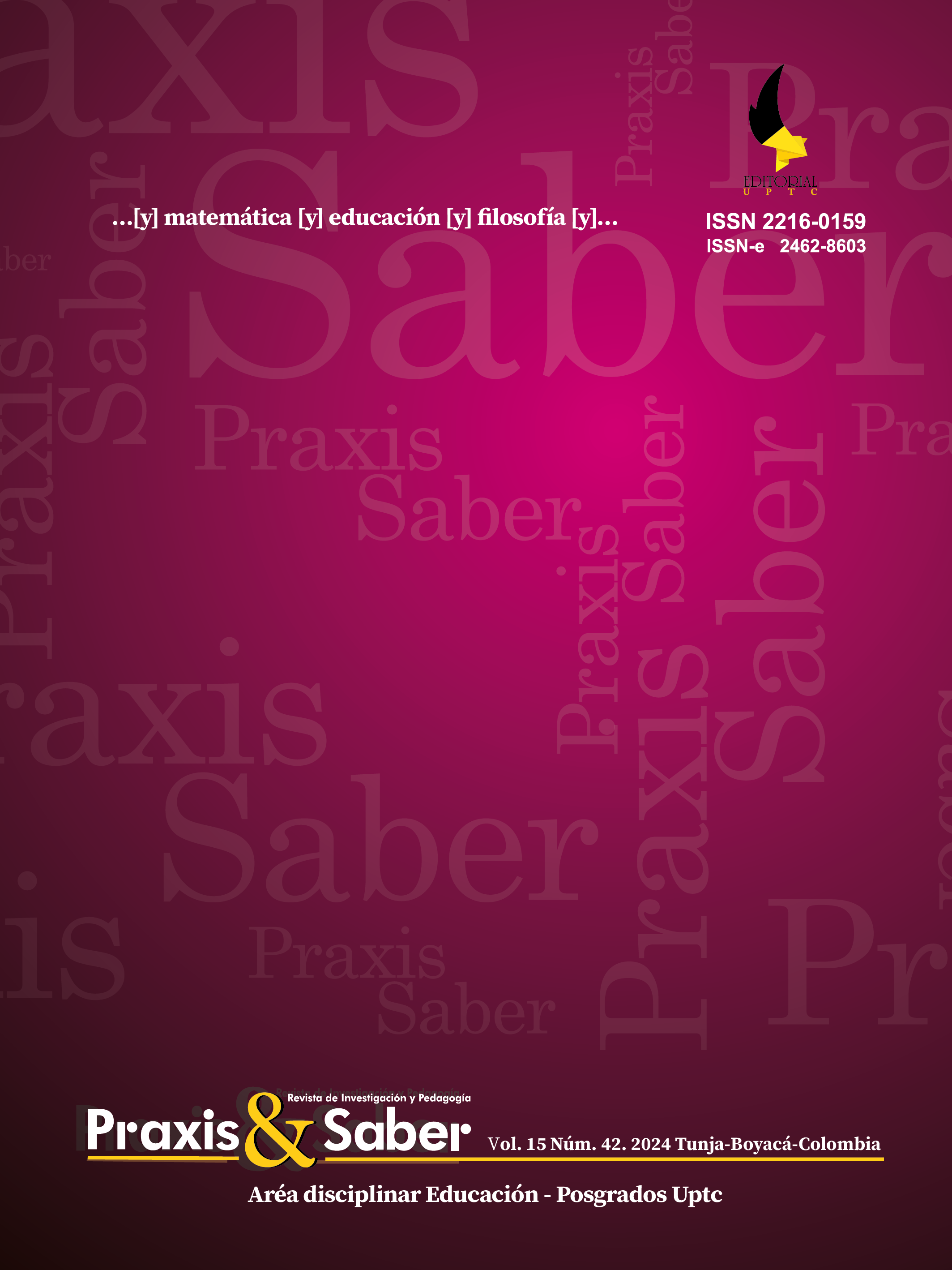Análisis de beneficios que perciben los estudiantes-docentes sobre la co-enseñanza dentro de un curso básico de inglés como lengua extranjera

Resumen
Ajustándose a los tiempos actuales, dos docentes-investigadores de ÚNICA se dieron a la tarea de idear una estrategia colaborativa con el objetivo de dotar a un grupo de 12 docentes en formación de Inglés Básico de conocimientos sobre co-enseñanza, plasmados en una serie de metodologías, habilidades, experticias y de contextos.
Estos beneficios a nivel de conocimiento se incluyeron en la co-enseñanza, la cual implica que dos o más educadores diseñen, enseñen y evalúen una parte o la totalidad de una clase. A través de una serie de entrevistas y reflexiones de los participantes, los investigadores encontraron que los futuros docentes elogiaron la co-docencia como una estrategia pertinente en sus futuras clases de idiomas para fomentar, por un lado, estrategias y recursos pedagógicos variados, y por otro lado , favorecer la visualización de los roles de co-enseñanza en el futuro, lo que está conectado a la construcción de la identidad de ellos como futuros profesores, que se constituye un aspecto del desarrollo profesional.
Palabras clave
co-enseñanza, estrategias de co-enseñanza, realimentación colegiada, formación docente, desarrollo profesional
Biografía del autor/a
Francisco Antonio Pérez-Gómez
Wilson Alejandro Pérez-Segura
Citas
- Aliakbari, M., & Bazyar, A. (2012). Exploring the Impact of Parallel Teaching on General Language Proficiency of EFL Learners. Journal of Pan-Pacific Association of Applied Linguistics,16(1), 55-71. https://files.eric.ed.gov/fulltext/EJ979922.pdf
- Anani, O., Badaki, J., & Kamai, R. (2016). Effects of Feedback Intervention on Team-teaching in English Language Classrooms in Nigeria. Journal of Education and Practice. 7(25),27-43. https://files.eric.ed.gov/fulltext/EJ1115848.pdf
- Benwell, B., & Stokoe, E. (2006). Discourse and identity. Edinburgh University Press. https://books.google.com.co/books?hl=es&lr=&id=RM-qBgAAQBAJ&oi=fnd&pg=PP1&dq=Benwell,+B.+and+Stokoe,+E.+(2006).+Discourse+and+identity.+Edinburgh+University+Press.&ots=XVYb37ja0T&sig=oRAW8f24iOh9Wj5kYm_y7idTTys#v=onepage&q&f=false
- Boland, D., Alkhalifa, K., & Al-Mutairi, M. (2019). Co-Teaching in EFL Classroom: The promising model. English Language Teaching, 12(12), 95.-117. DOI: https://doi.org/10.5539/elt.v12n12p95
- Butterfield, J., & Bhatta, B. (2015). IRF sequences in team-teaching EFL classrooms. The Asian Journal of Applied Linguistics, 2(3), 176-185.
- Clement, M., & Vandenberghe, R. (2000). Teachers’ professional development: a solitary or collegial (ad)venture? Teaching and Teacher Education 16, pp. 81-101.https://www.sciencedirect.com/science/article/abs/pii/S0742051X99000517?via%3Dihub DOI: https://doi.org/10.1016/S0742-051X(99)00051-7
- Cook, L., & Friend, M. (2004). Co-teaching: Principles, Practices and Pragmatics, Paper presented at the quarterly meeting of the New Mexico Public Education Department Special Education Meeting, Albuquerque, NM.https://files.eric.ed.gov/fulltext/ED486454.pdf
- Escobar, C. (2020). Coteaching in CLIL in Catalonia.CLIL Journal of Innovationand Research in Plurilingual and Pluricultural Education, 3 (2), 37-55. https://doi.org/10.5565/rev/clil.54 DOI: https://doi.org/10.5565/rev/clil.54
- Friend, M. (2008). Co-teaching: A simple solution that isn’t simple after all. Journal of Curriculum and Instruction, 2(2), 9–19.https://joci.ecu.edu/index.php/JoCI/article/download/17/26 DOI: https://doi.org/10.3776/JOCI.2008.V2I2P9-19
- King (2018). Joint Initiation and Joint Feedback: Connecting Collaboration with Pedagogy in Co-teaching. Hacettepe University Journal of Education (HUJE), 33, 4-15. https://www.researchgate.net/publication/324592231_Joint_Initiation_and_Joint_Feedback_Connecting_Collaboration_with_Pedagogy_in_Co-teaching DOI: https://doi.org/10.16986/HUJE.2018038793
- Lee, J. (2017). Co-initiations in EFL collaborative teaching interaction. English Teaching, 72(3), 3-24 DOI: https://doi.org/10.15858/engtea.72.3.201709.3
- López, M. (2020). Co-teaching: Preschool Teachers’ Insights About The EFL Co-acting Practice. [Undergraduate thesis, Universidad Pedagógica Nacional]. http://repository.pedagogica.edu.co/bitstream/handle/20.500.12209/12663/Co-teaching%2c%20preschool%20teachers%27%20insights.pdf?sequence=1&isAllowed=y
- McDuffie, K., Mastropieri, M., & Scruggs, T. (2009). Differential effects of peer tutoring in co-taught and non-co-taught classes: Results for content learning and student-teacher interactions. Exceptional Children, 75, 493- 510 DOI: https://doi.org/10.1177/001440290907500406
- Naegele, Z., Ralston, N., & Smith, R. (2016). Co-Teaching as a Method to Benefit English Language Learners”. Education Faculty Publications and Presentations. 37. https://pilotscholars.up.edu/cgi/viewcontent.cgi?article=1045&context=edu_facpubs
- Nafiye, C., & Hatice, C. (2020). ELT Student Teacher Identity Construction: Exploring TeacherRoles and Domains of Expertise. Acıbadem Mehmet Ali Aydinlar University. https://ojs.unm.ac.id/ijole/article/view/10655/xml
- Martínez, N, & García. (2014). Language Learning Styles and Strategies. An Overview. GALA
- Pérez-Gómez, F., & Pérez-Segura, A. (2022). Journey through Colombian Co-Teaching Experiences (Working Paper). https://doi.org/10.26817/paper.18 DOI: https://doi.org/10.26817/paper.18
- Puello, I., & Ramírez, S. (2020). Co teaching as an alternative to promote English language learning in a public school in Bogotá. [Master ‘s degree study. Universidad de La Sabana].https://intellectum.unisabana.edu.co/bitstream/handle/10818/45176/Tesis%20Ibeth%20Puello-Sandra%20Ram%C3%ADrez.pdf?sequence=1&isAllowed=y
- Sekoubaou, A. (2018). An Exploration of the Concept and Practice of Co-teaching in Public Secondary School EFL Classes in Benin. Journal of Language Teaching and Research, 9, No. 4, pp. 765-776. http://dx.doi.org/10.17507/jltr.0904.13 DOI: https://doi.org/10.17507/jltr.0904.13
- Sfard, A., & Prusak, A. (2005). Telling identities: In search of an analytic tool for investigating learning as a culturally shaped activity. Educational Researcher, 34(4), 14–22. https://www.researchgate.net/publication/242177845_Telling_Identities_In_Search_of_an_Analytic_Tool_for_Investigating_Learning_as_a_Culturally_Shaped_Activity DOI: https://doi.org/10.3102/0013189X034004014
- St. Cloud State University. (2011). Co-teaching strategies (Data file). https://www.stcloudstate.edu/oce/_files/documents/coteaching/Co-Teachingdefinitionsandexamples.pdf
- Strauss, A., & Corbin, J. (1998).Basics of Qualitative Research: Grounded Theory Procedures and Techniques (2nd ed.). Sage.
- Villa, R., Thousand, J., & Nevin, A. (2008). A guide to co-teaching: practical tips for facilitating student learning . Thousand Oaks: Corwin Press.
